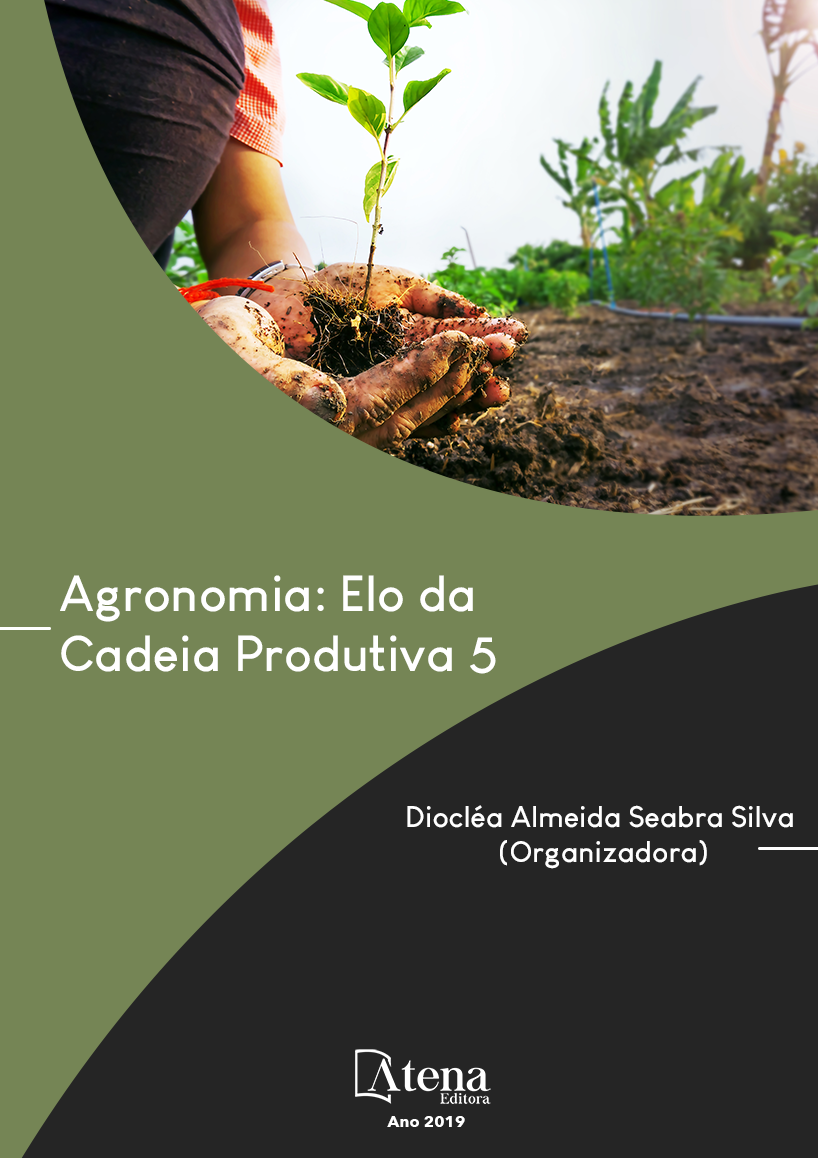
ADUBAÇÃO NITROGENADA E MOLÍBDICA DA CULTURA DA SOJA: INFLUÊNCIA SOBRE A PRODUTIVIDADE DE GRÃOS E TEORES DE NITROGÊNIO NAS FOLHAS
Instalaram-se quatro experimentos
com soja em Viçosa e Coimbra, Zona da Mata
de Minas Gerais. Em 1995/96, utilizou-se um
fatorial (4 x 4) + (1 x 4), quatro doses de N (0,
40, 80 e 120 kg/ha), aplicadas parceladamente
em cobertura, combinadas com quatro doses
de Mo (0, 40, 80 e 120 g/ha), em aplicação foliar
aos 27 dias após a emergência das plantas,
mais quatro tratamentos adicionais: 40-20, 40-
40, 40-60 e 40-80 de N (kg/ha) e Mo (g/ha), o
primeiro aplicado parceladamente em cobertura
e o segundo, nas sementes. Em 1996/97,
apenas as combinações N-Mo dos tratamentos
adicionais foram diferentes: 0-40, 0-80, 40-40
e 40-80. Todas as parcelas receberam uma
adubação básica de 120 kg/ha de P2
O5 e 60 kg/
ha de K2
O. As sementes foram inoculadas com
duas estirpes de Bradyrhizobium japonicum. A
soja CAC-1 foi semeada em fileiras espaçadas
de 0,6 m, com 15 plantas/m. Os resultados
mostraram que: 1) Em três experimentos o Mo
aumentou o rendimento da soja e a dose mais
favorável variou de 76 a 100 g/ha; 2) Em dois
experimentos o N incrementou a produtividade,
sendo 120 kg/ha a dose mais favorável; 3)
Sozinho, o Mo trouxe aumentos de produção
que variaram de 20 a 32%, enquanto o efeito
isolado do N foi de 11%; 4) Quando houve efeito
conjunto de N e Mo, o aumento foi de 69%; 5)
Para o rendimento, não houve diferença entre
a aplicação do Mo nas folhas ou nas sementes
ou, então, a aplicação nas sementes foi algo
mais eficiente; 6) Em geral, o Mo aumentou o
teor de N-total nas folhas; e, 7) A inoculação das
sementes com rizóbio, associada à aplicação do
micronutriente, é mais indicada que a adubação
nitrogenada.
ADUBAÇÃO NITROGENADA E MOLÍBDICA DA CULTURA DA SOJA: INFLUÊNCIA SOBRE A PRODUTIVIDADE DE GRÃOS E TEORES DE NITROGÊNIO NAS FOLHAS
-
DOI: 10.22533/at.ed.2431903125
-
Palavras-chave: Glycine max, rendimento, nitrogenase, redutase do nitrato, Bradyrhizobium.
-
Keywords: : Glycine max, yield, nitrogenase, nitrate reductase, Bradyrhizobium.
-
Abstract:
Soybean experiments were carried
out in Viçosa and Coimbra in the “agricultural
year” of 1995/96 and repeated in both localities
in 1996/97. In the first year a (4 x 4) + (1 x 4) factorial was used, in which the factors were four doses of N (0, 40, 80 and 120 kg/
ha) x four doses of Mo (0, 40, 80 and 120 g/ha). The nitrogenous fertilizer was applied
parcelled as side dressing, while the molybdic fertilizer was sprayed on the leaves 27
days after plant emergence. The four additional treatments comprised the following
combinations of N (kg/ha) and Mo (g/ha): 40-20, 40-40, 40-60 and 40-80, in which the
first was applied parcelled as side dressing and the second at the seeds. In the second
year, only the N-MO combinations of the additional treatments were different: 0-40,
0-80, 40-40 and 40-80. All plots received a basic fertilization of 120 kg/ha of P2
O5 and
60 kg/ha of K2
O. Seeds were inoculated with two strains of Bradyrhizobium japonicum.
Soybean cultivar CAC-1 was planted in rows 0,6 m apart at the density of 15 plants/m.
The results showed that: 1) In three experiments Mo increased the soybean yield,
and the most favorable dose varied from 76 to 100 g/ha; 2) In two experiments N
increased the yield, and 120 kg/ha was the most favorable dose; 3) Mo alone brought
yield increases from 20 to 32%, while the N alone caused 11% of yield increase; 4)
When N and Mo had a combined effect, yield increase reached 69%; 5) In relation
to yield, either no difference was found between Mo application on leaves and seeds
or application on seeds was somewhat more efficient; 6) Generally, leaf total N was
increased by the micronutrient; e, 7) Seed inoculation with rhizobia plus Mo application
is more indicated than N fertilization.
-
Número de páginas: 15
- Clibas Vieira
- Lucio Pereira S


